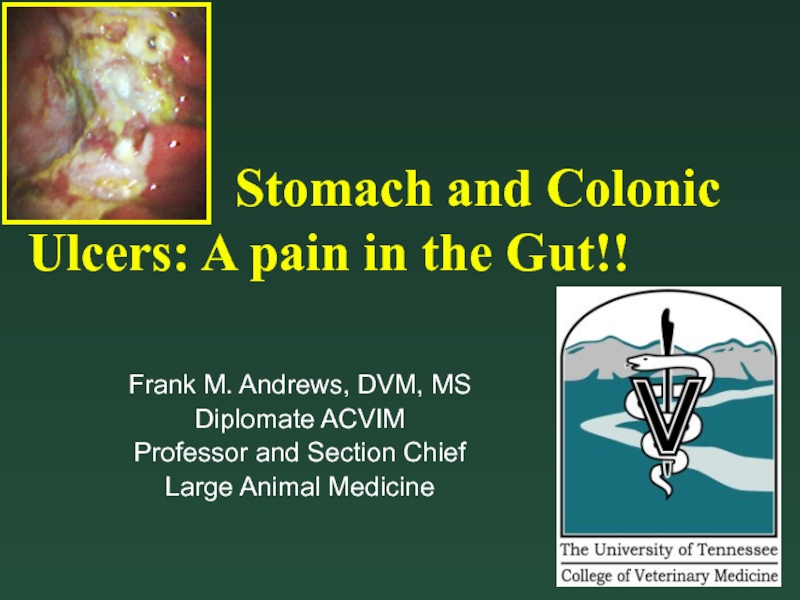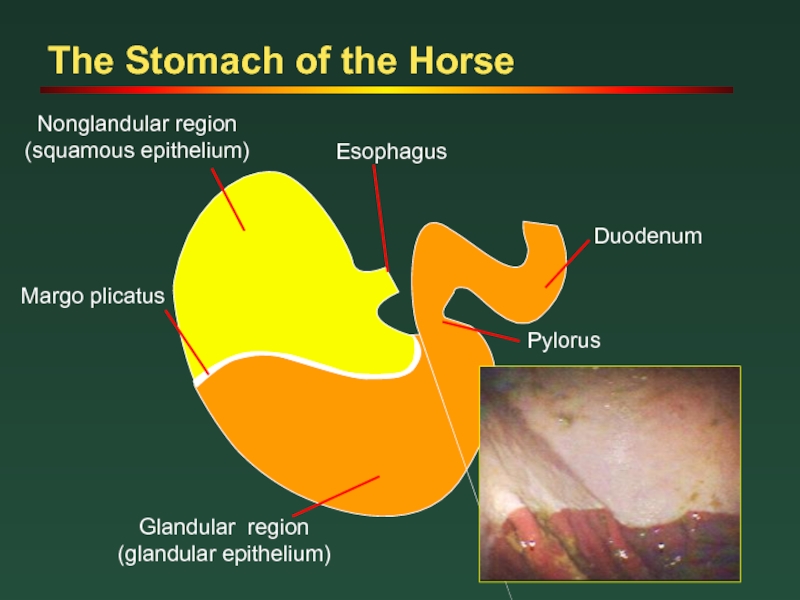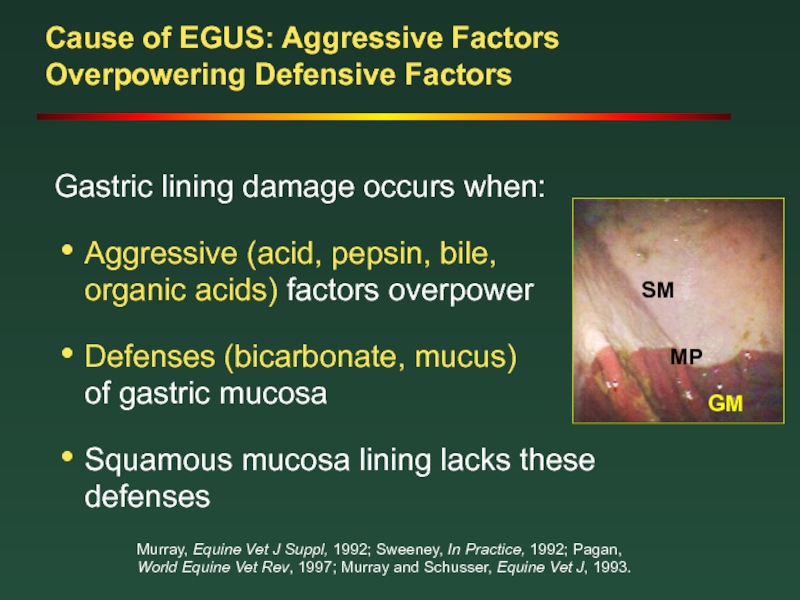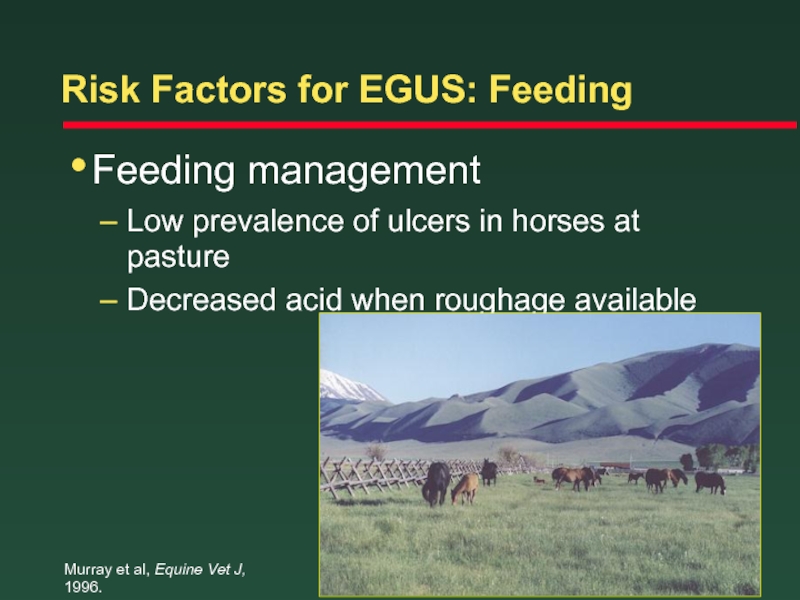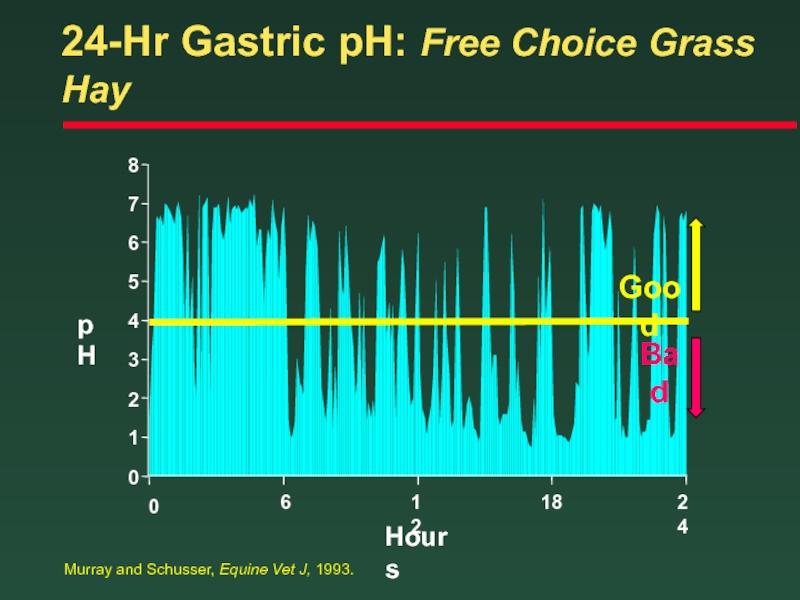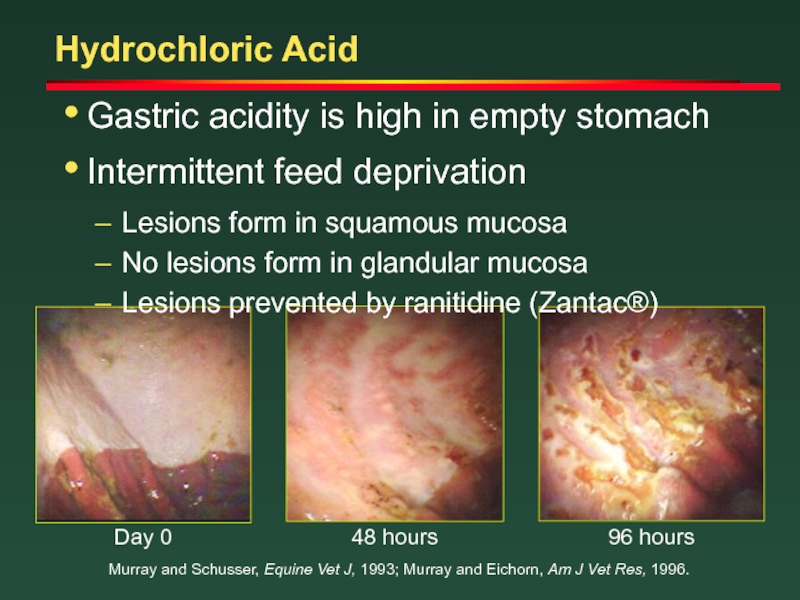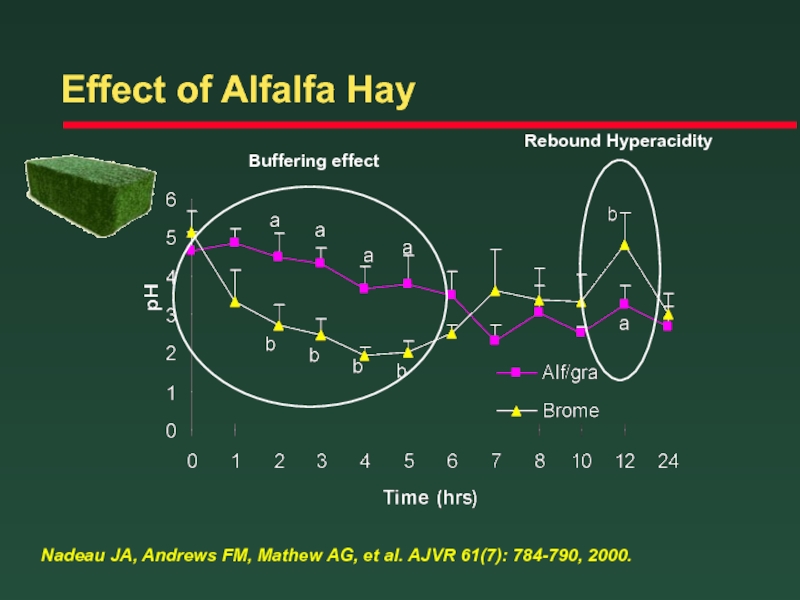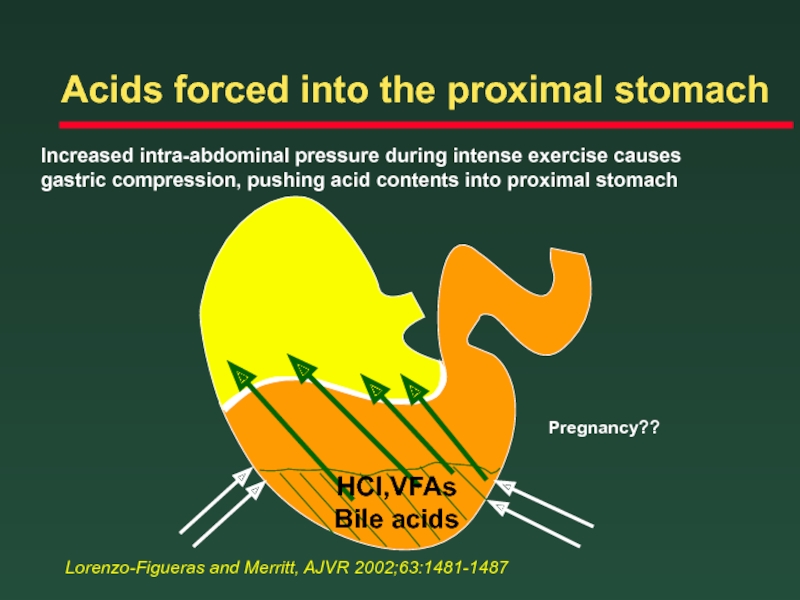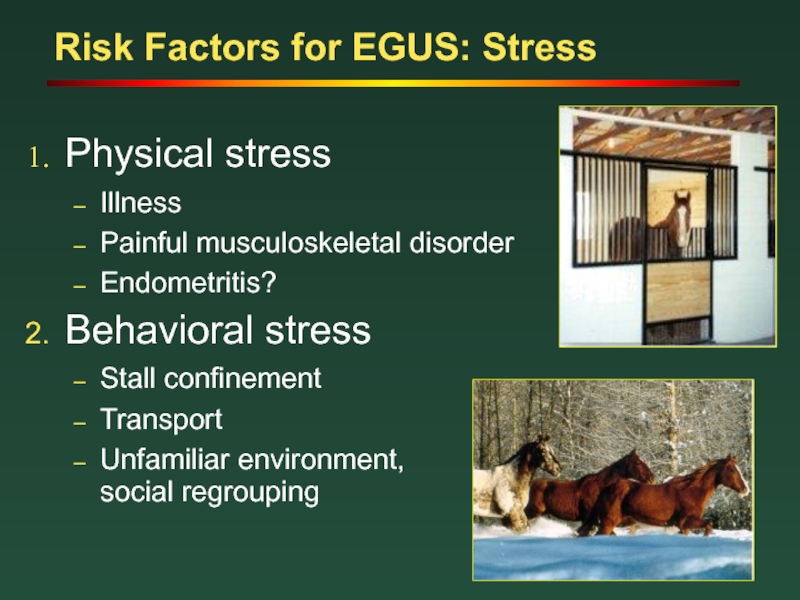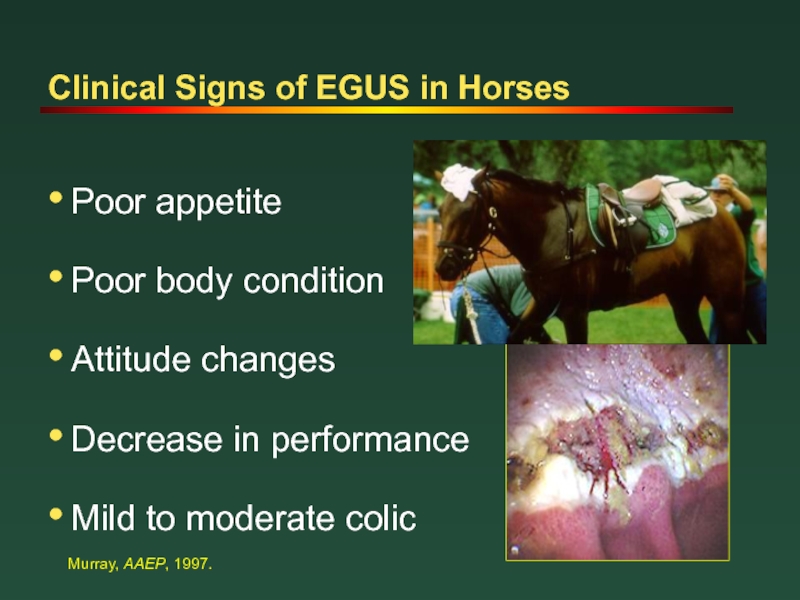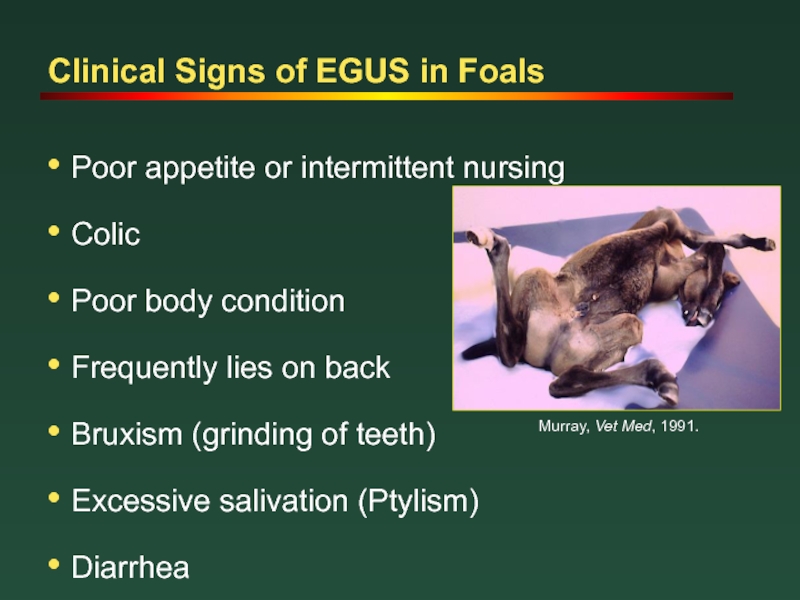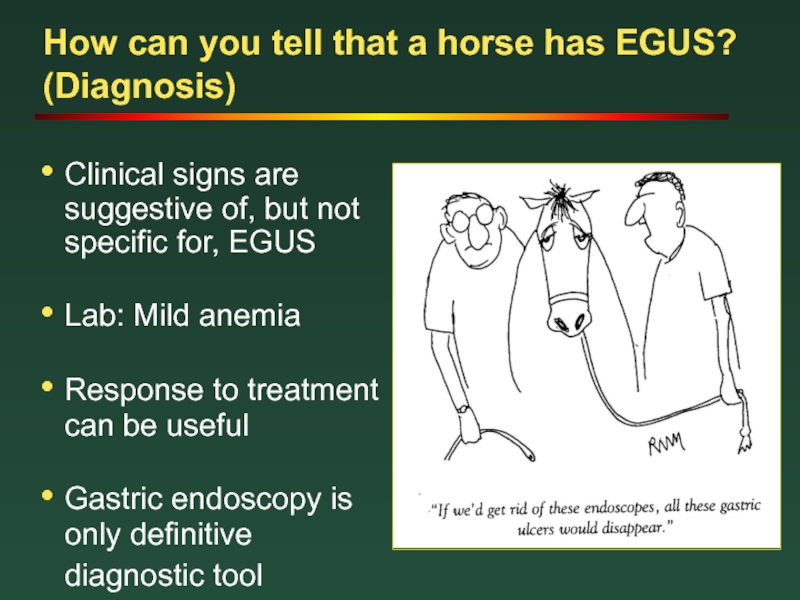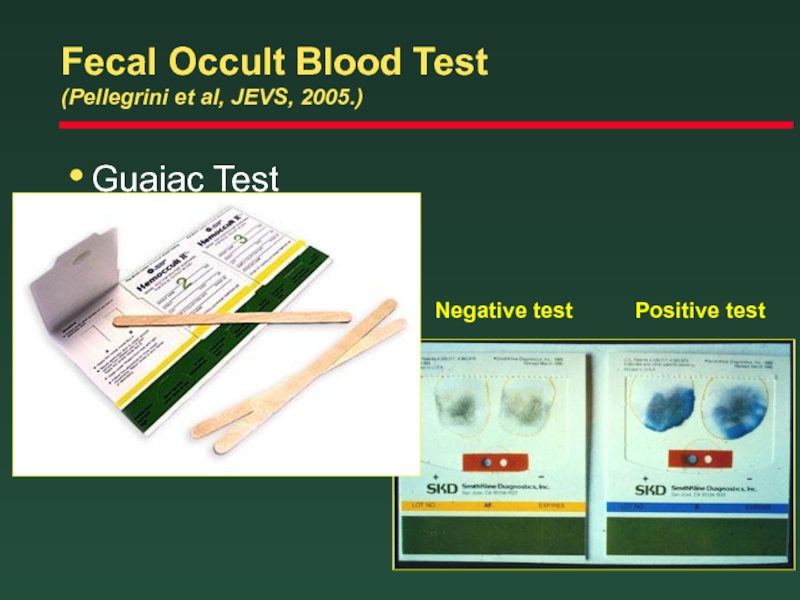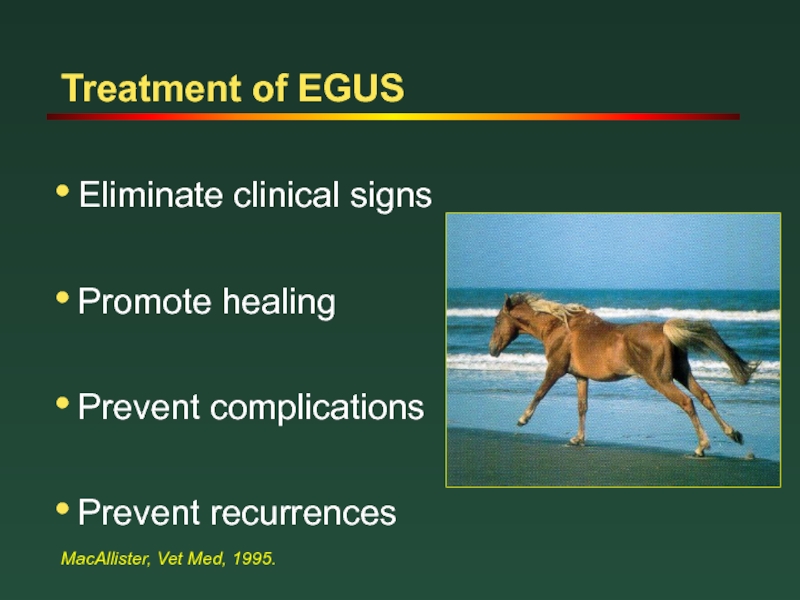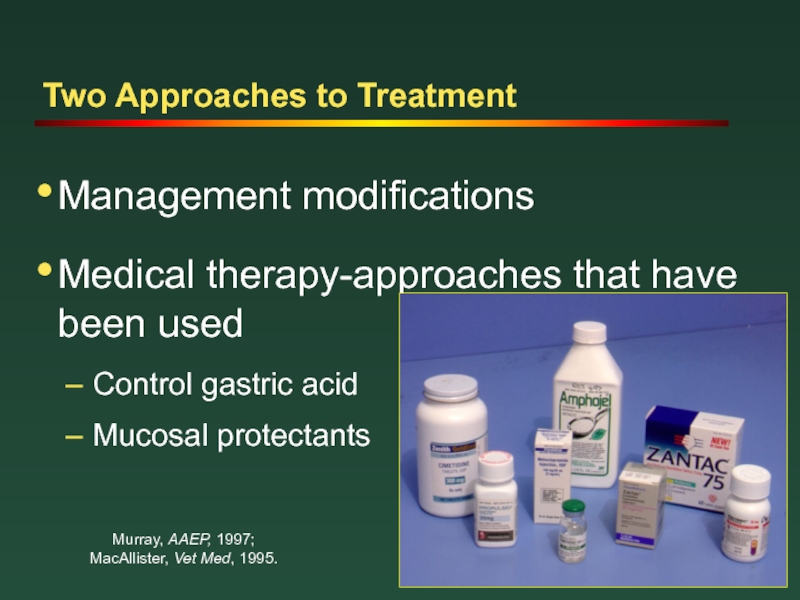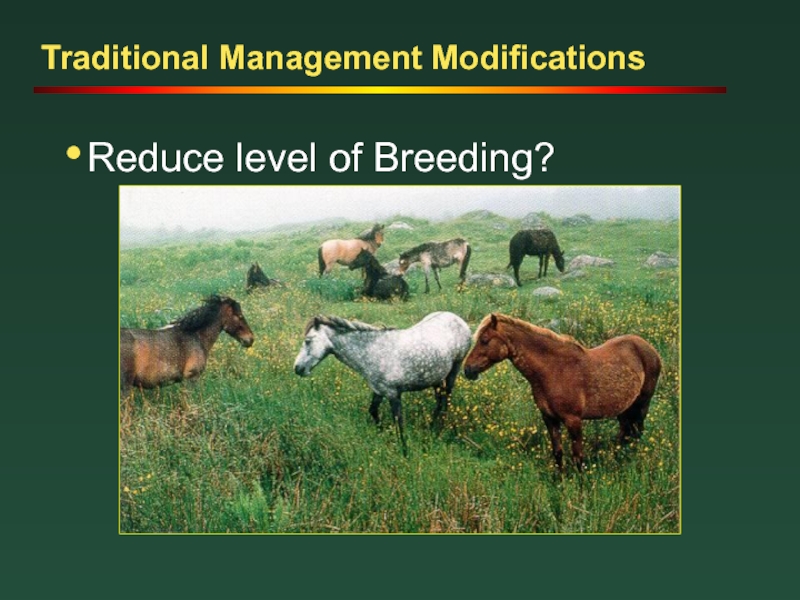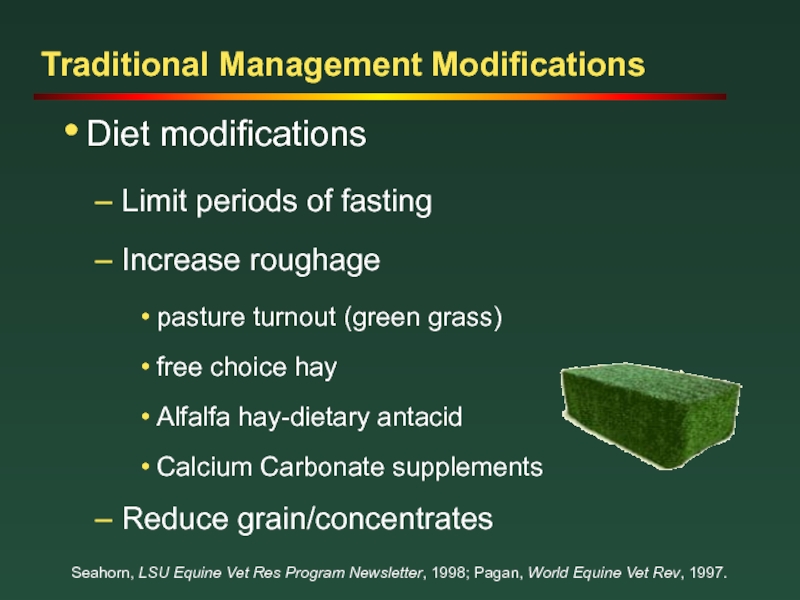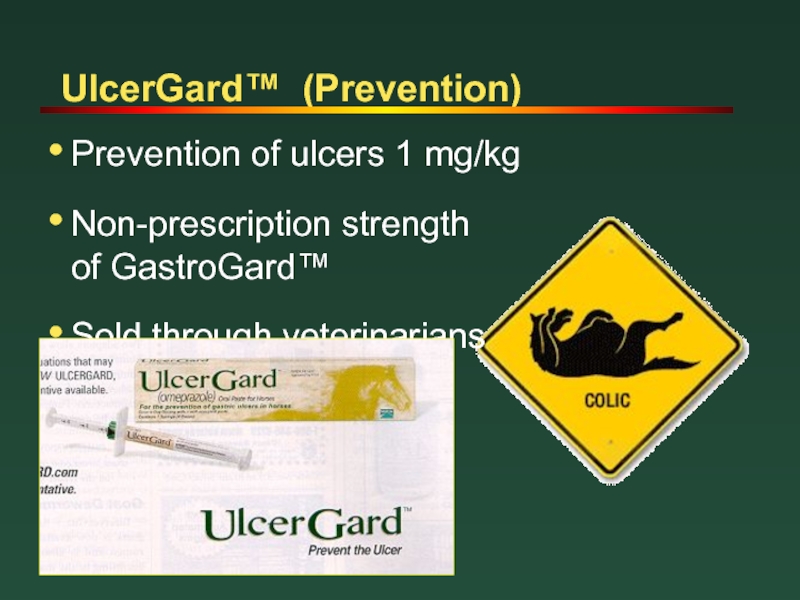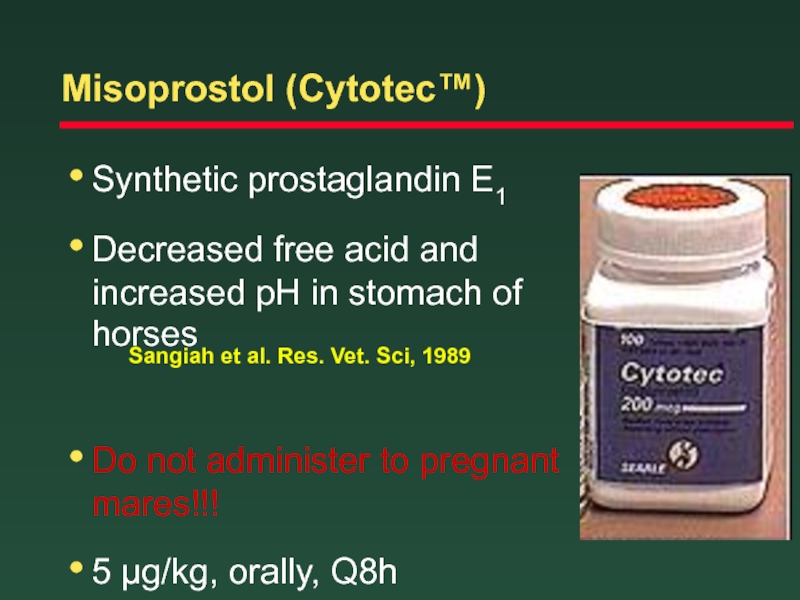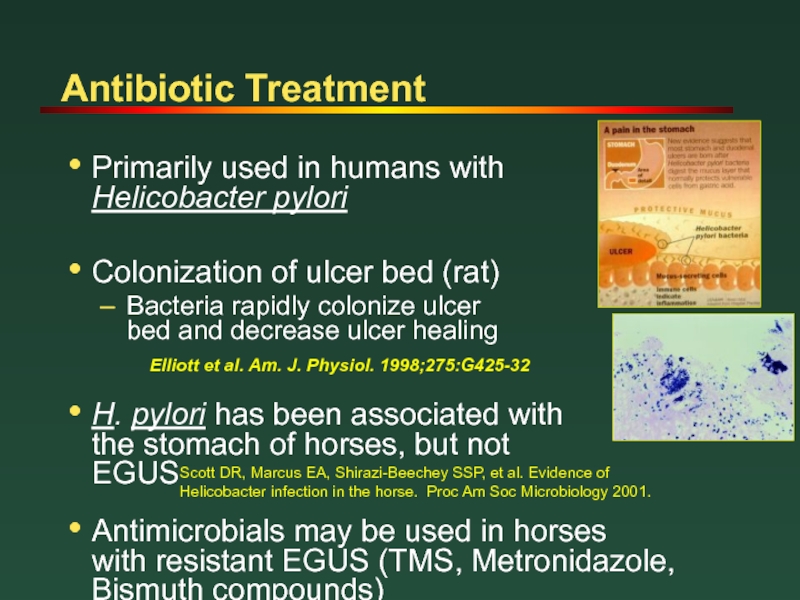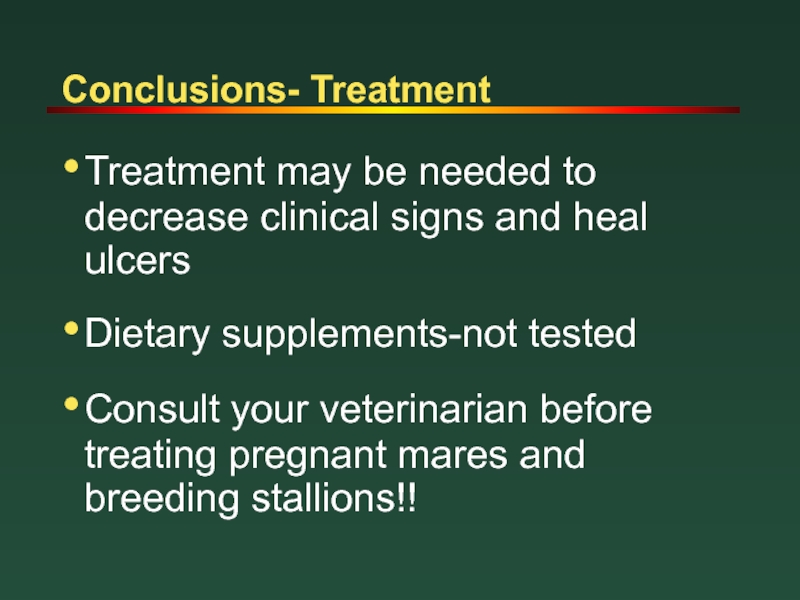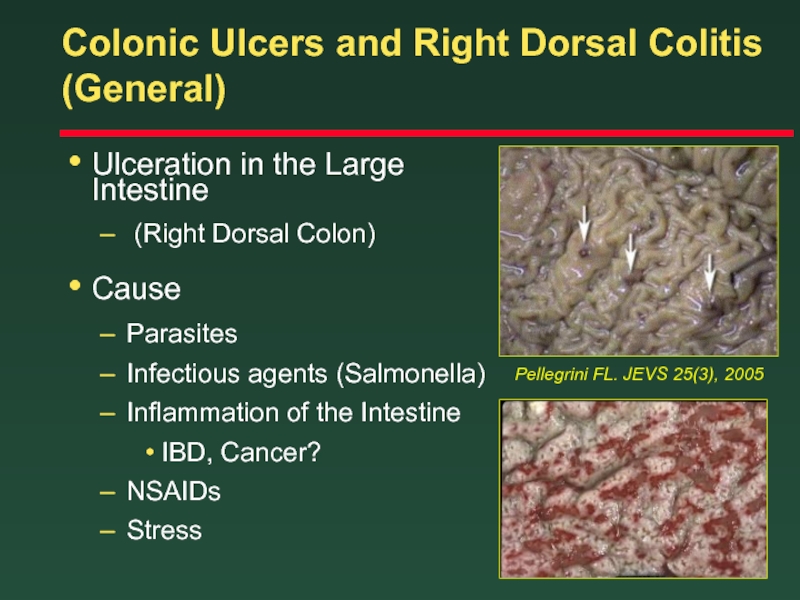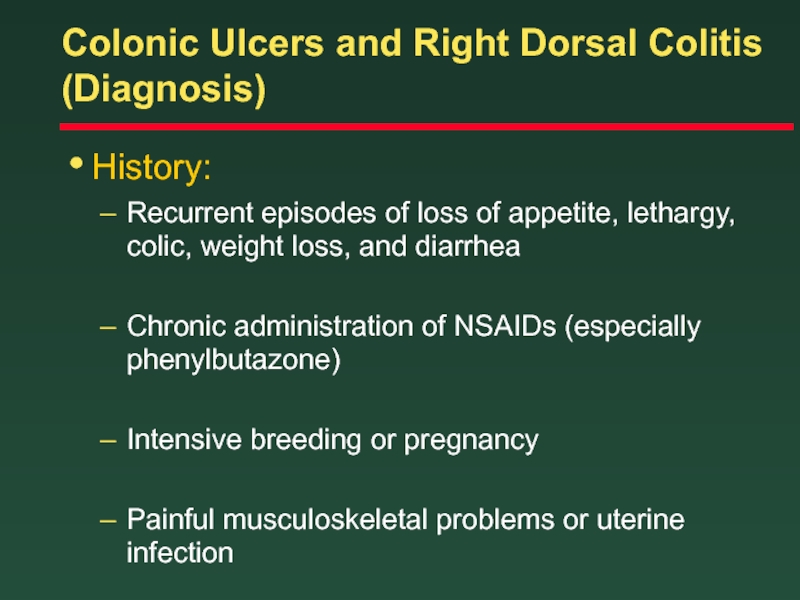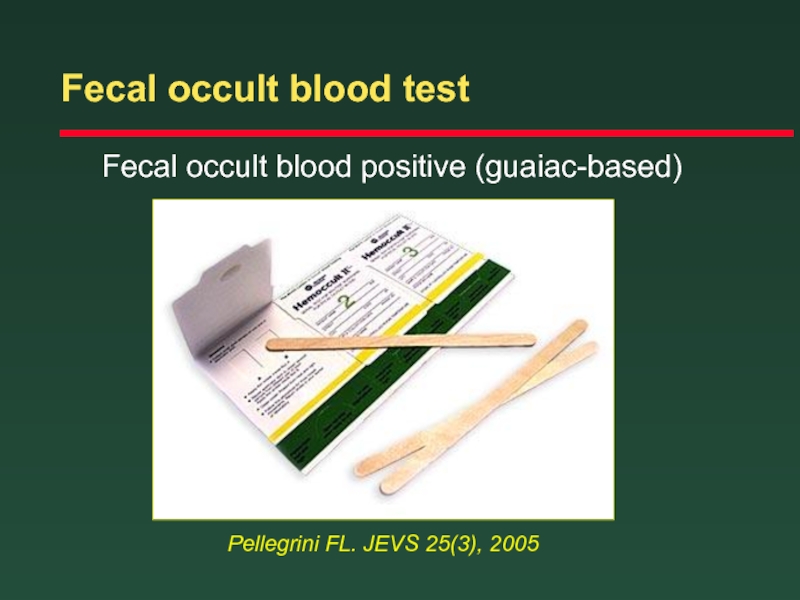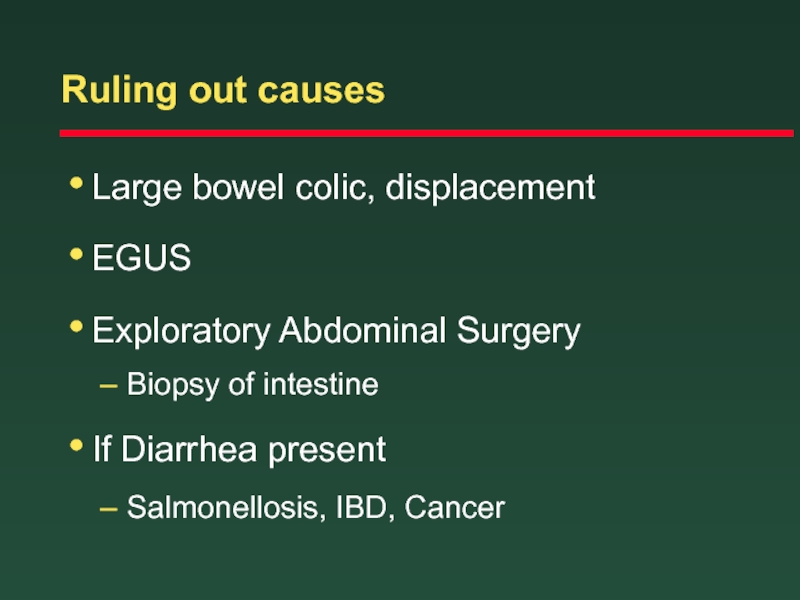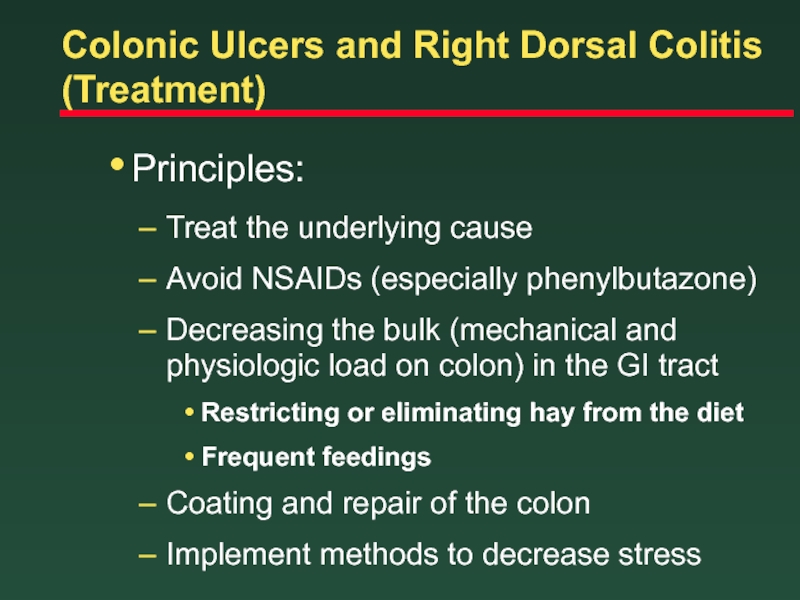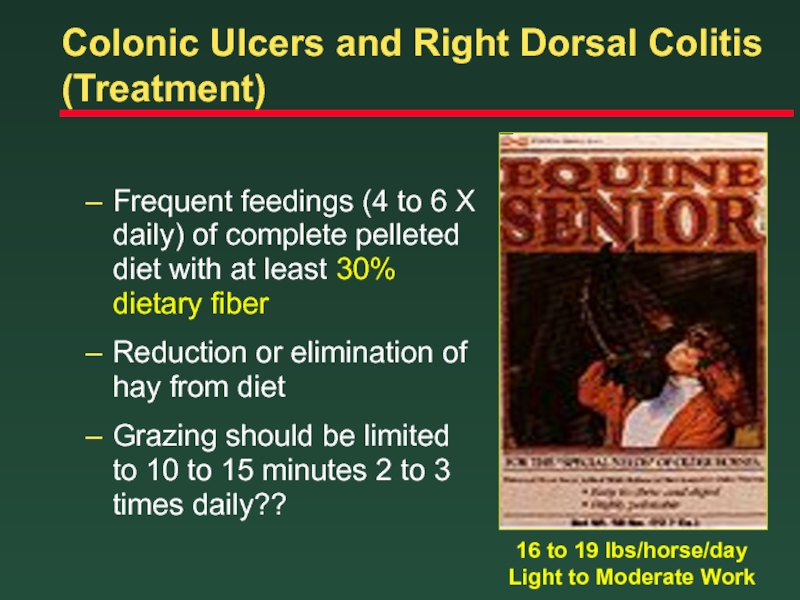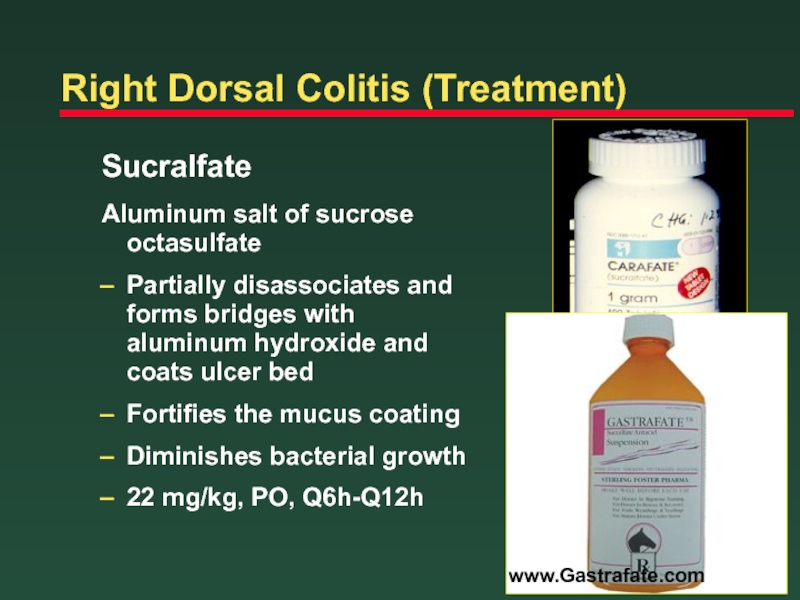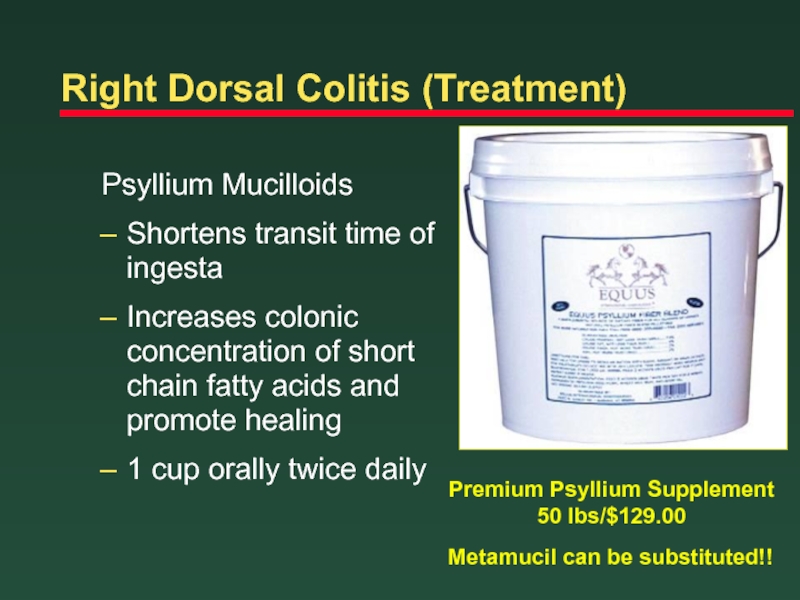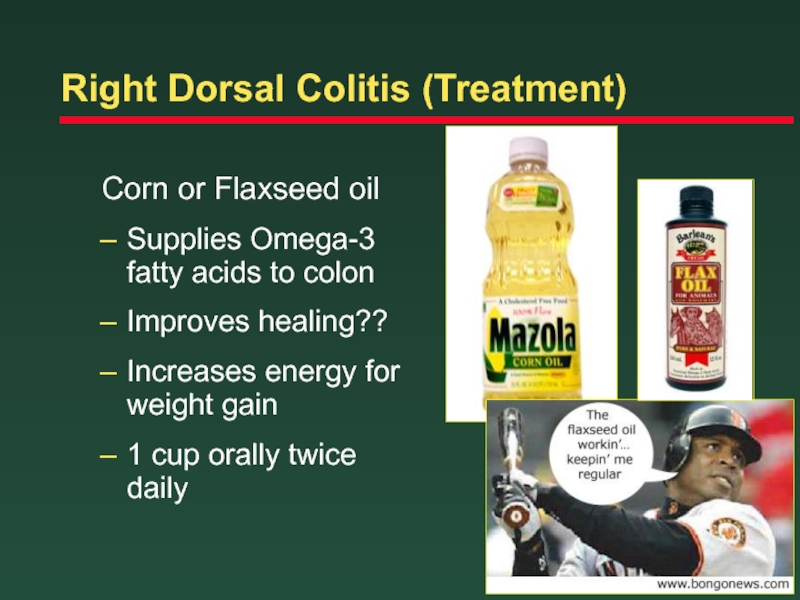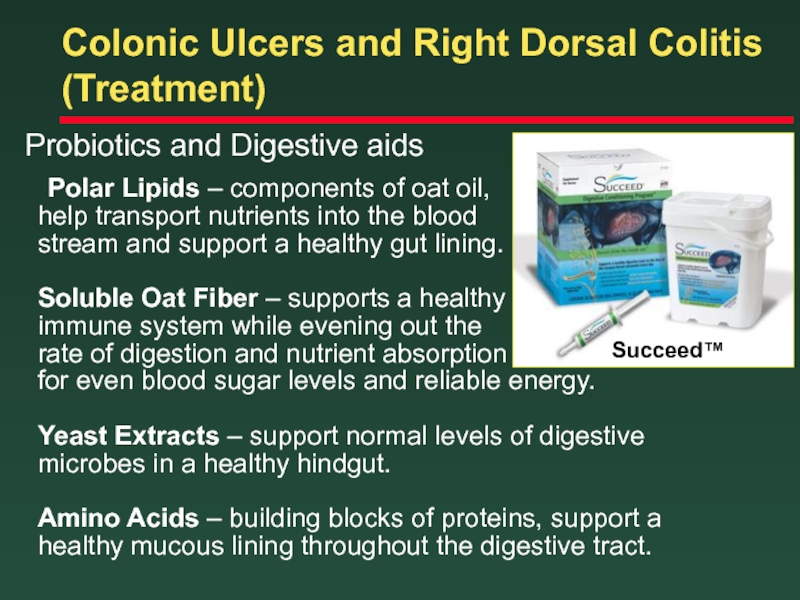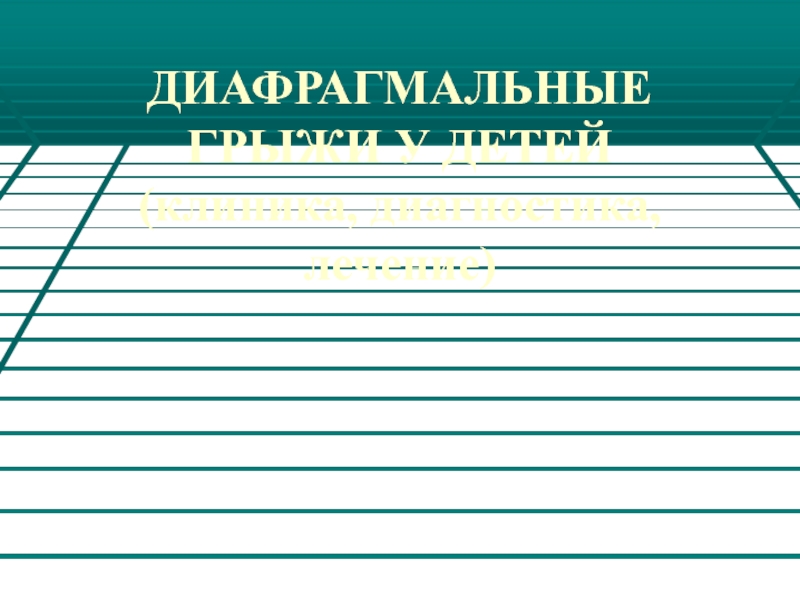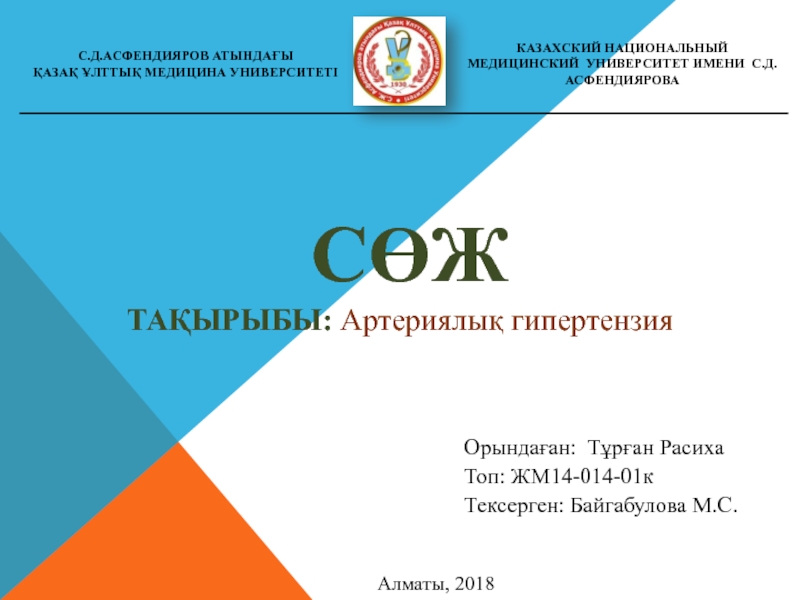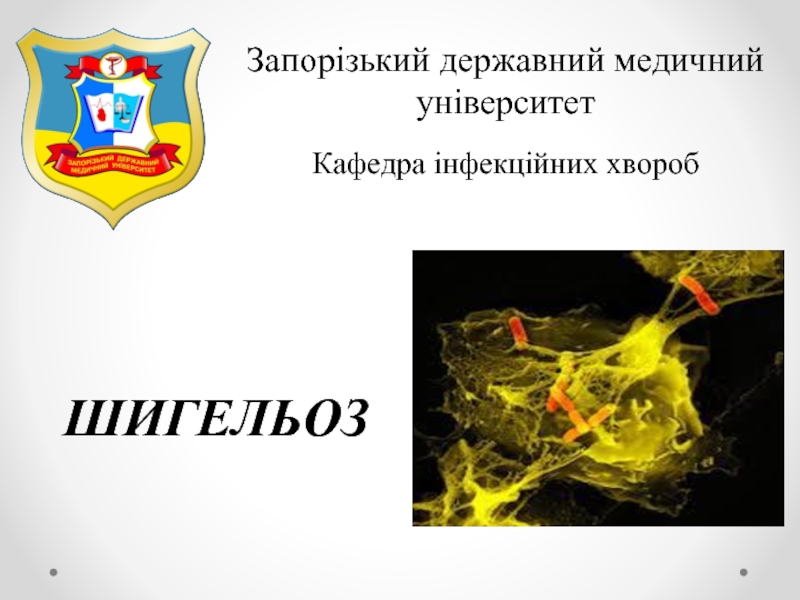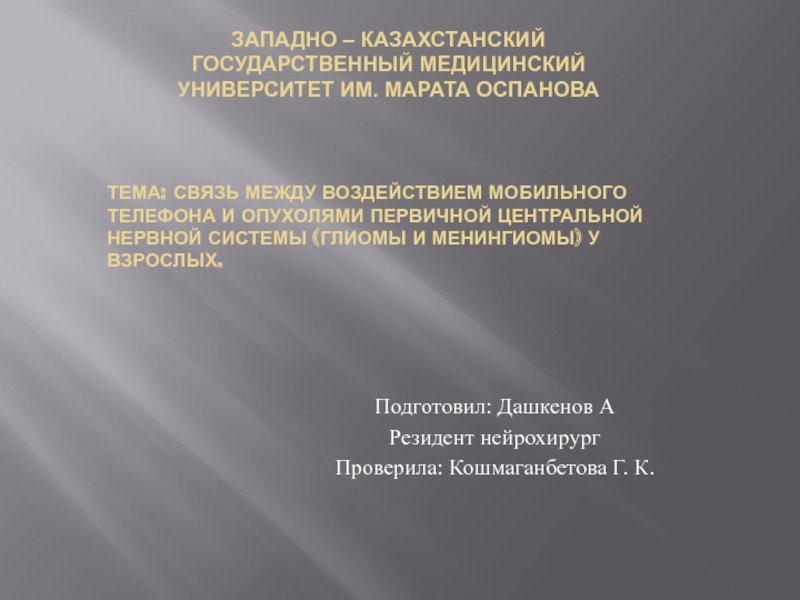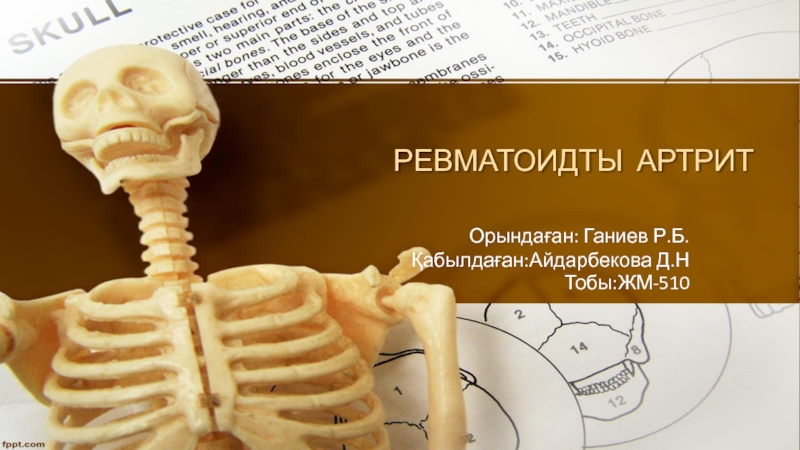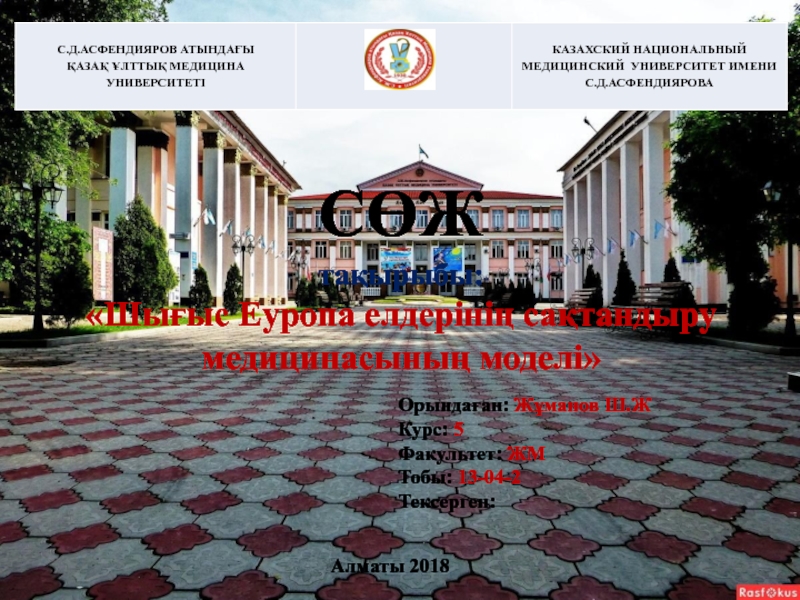Frank M. Andrews, DVM, MS
Diplomate ACVIM
Professor and Section Chief
Large Animal Medicine
- Главная
- Разное
- Дизайн
- Бизнес и предпринимательство
- Аналитика
- Образование
- Развлечения
- Красота и здоровье
- Финансы
- Государство
- Путешествия
- Спорт
- Недвижимость
- Армия
- Графика
- Культурология
- Еда и кулинария
- Лингвистика
- Английский язык
- Астрономия
- Алгебра
- Биология
- География
- Детские презентации
- Информатика
- История
- Литература
- Маркетинг
- Математика
- Медицина
- Менеджмент
- Музыка
- МХК
- Немецкий язык
- ОБЖ
- Обществознание
- Окружающий мир
- Педагогика
- Русский язык
- Технология
- Физика
- Философия
- Химия
- Шаблоны, картинки для презентаций
- Экология
- Экономика
- Юриспруденция
Stomach and Colonic Ulcers: A pain in the Gut презентация
Содержание
- 2. Equine Gastric Ulcer Syndrome (EGUS) Esophagus, Stomach
- 3. Equine Gastric Ulcer Syndrome (EGUS) Prevalence in
- 4. Equine Gastric Ulcer Syndrome (EGUS) Prevalence in
- 5. Impact of EGUS on Horses Results in
- 6. Impact of EGUS on Foals Gastric outflow
- 7. The Stomach of the
- 8. Cause of EGUS: Aggressive Factors Overpowering
- 9. Risk Factors for EGUS: Feeding Feeding management
- 10. 24-Hr Gastric pH: No Feed Murray and Schusser, Equine Vet J, 1993.
- 11. 24-Hr Gastric pH: Free Choice Grass Hay Murray and Schusser, Equine Vet J, 1993.
- 12. Hydrochloric Acid Gastric acidity is high
- 13. Effect of Alfalfa Hay Buffering
- 14. Results: Gastric ulcer Number and Severity
- 15. Feed Analysis Feed % DM
- 16. Risk of Grain Feeding Fermentation of grain
- 17. Risk Factors for EGUS: Training/Racing Intensive exercise
- 18. Acids forced into the proximal stomach Increased
- 19. Risk Factors for EGUS: Stress Physical
- 20. Risk Factors for EGUS: Non-Steroidal Anti-Inflammatory Drugs
- 21. Clinical Signs of EGUS in Horses
- 22. Clinical Signs of EGUS in Foals
- 24. How can you tell that a horse
- 25. Fecal Occult Blood Test (Pellegrini et al, JEVS, 2005.) Guaiac Test Positive test Negative test
- 26. Treatment of EGUS Eliminate clinical signs
- 27. Two Approaches to Treatment Management modifications Medical
- 28. Traditional Management Modifications Reduce level of Breeding?
- 29. Diet modifications Limit periods of fasting Increase
- 30. Conclusions: Recommendations Roughage should be provided throughout
- 31. Dietary Management: Corn oil Decreases stomach acid
- 32. Dietary Management: Rice Bran or Rice Bran
- 33. Management Modifications Limit stressful events Long-term stall
- 34. Medical Management of EGUS Neutralizing agents Antacids
- 35. UlcerGard™ (Prevention) Prevention of ulcers 1 mg/kg
- 36. Misoprostol (Cytotec™) Synthetic prostaglandin E1 Decreased free
- 37. Antibiotic Treatment Primarily used in humans with
- 38. Feed Supplements (Neutriceuticals) NeighLox® (Kentucky Performance
- 39. Other Feed Supplements (Neutriceuticals) G.U.T (Uckele Health
- 40. Conclusions EGUS is a major cause of
- 41. Conclusions- Treatment Treatment may be needed to
- 42. Colonic Ulcers and Right Dorsal Colitis (General)
- 43. Colonic Ulcers and Right Dorsal Colitis (Diagnosis)
- 44. Colonic Ulcers and Right Dorsal Colitis (Diagnosis)
- 45. Colonic Ulcers and Right Dorsal Colitis (Diagnosis)
- 46. Colonic Ulcers and Right Dorsal Colitis (Diagnosis) Pellegrini FL. JEVS 25(3), 2005
- 47. Colonic Ulcers and Right Dorsal Colitis (Diagnosis) Ultrasonographic examination: Jones et al. JAVMA 222(9), 2003
- 48. Colonic Ulcers and Right Dorsal Colitis (Diagnosis)
- 49. Fecal occult blood test Pellegrini FL. JEVS 25(3), 2005 Fecal occult blood positive (guaiac-based)
- 50. Ruling out causes Large bowel colic, displacement
- 51. Colonic Ulcers and Right Dorsal Colitis (Treatment)
- 52. Colonic Ulcers and Right Dorsal Colitis (Treatment)
- 53. Right Dorsal Colitis (Treatment) Sucralfate Aluminum salt
- 54. Right Dorsal Colitis (Treatment) Psyllium Mucilloids Shortens
- 55. Right Dorsal Colitis (Treatment) Corn or Flaxseed
- 56. Colonic Ulcers and Right Dorsal Colitis (Treatment)
- 57. Right Dorsal Colitis (Treatment) Reduce Stress and
- 58. Right Dorsal Colitis (Treatment) Length of Treatment
Слайд 1 Stomach and Colonic Ulcers:
Слайд 2Equine Gastric Ulcer Syndrome (EGUS)
Esophagus, Stomach and Duodenum
Prevalence: 40% to 93%
Слайд 3Equine Gastric Ulcer Syndrome (EGUS)
Prevalence in Foals 25% to 51%
Prevalence in
Pregnant women (↑ progesterone)
Less gastric acid
more mucus
Less gastric ulcers
66% develop heartburn
Decrease LES tone
Stress??
Слайд 4Equine Gastric Ulcer Syndrome (EGUS)
Prevalence in breeding Stock?
Pregnant women at Risk
Previous
Smokers
Trans Global Chronicle™
Слайд 5Impact of EGUS on Horses
Results in poor body condition
Poor performance?
Can cause colic
Can have severe complications
duodenal strictures
Слайд 6Impact of EGUS on Foals
Gastric outflow
obstruction
Esophagitis
Chronic ulceration
Perforation (rupture)
& peritonitis
Photos
Слайд 7
The Stomach of the Horse
Margo plicatus
Glandular region
(glandular epithelium)
Pylorus
Esophagus
Duodenum
Nonglandular region
(squamous epithelium)
Слайд 8Cause of EGUS: Aggressive Factors
Overpowering Defensive Factors
Gastric lining damage occurs
Aggressive (acid, pepsin, bile, organic acids) factors overpower
Defenses (bicarbonate, mucus) of gastric mucosa
Squamous mucosa lining lacks these defenses
Murray, Equine Vet J Suppl, 1992; Sweeney, In Practice, 1992; Pagan, World Equine Vet Rev, 1997; Murray and Schusser, Equine Vet J, 1993.
SM
GM
MP
Слайд 9Risk Factors for EGUS: Feeding
Feeding management
Low prevalence of ulcers in horses
Decreased acid when roughage available
Murray et al, Equine Vet J, 1996.
Слайд 12
Hydrochloric Acid
Gastric acidity is high in empty stomach
Intermittent feed deprivation
Lesions form
No lesions form in glandular mucosa
Lesions prevented by ranitidine (Zantac®)
Murray and Schusser, Equine Vet J, 1993; Murray and Eichorn, Am J Vet Res, 1996.
Слайд 13Effect of Alfalfa Hay
Buffering effect
Rebound Hyperacidity
Nadeau JA, Andrews FM, Mathew AG,
Слайд 14Results: Gastric ulcer
Number and Severity Score
Nadeau JA, Andrews FM, Mathew
Слайд 15Feed Analysis
Feed % DM % CP *Ca (mg/g)
Grain 99.8 14.81 3.2** 0.56**
Alfalfa 94.52 20.85 14.1*** ***2.1
Brome 95.51 7.55 7.4** 6.22**
*on a dry matter basis
** estimated from later feed analysis
*** estimated from NRC
Nadeau JA, Andrews FM, Mathew AG, et al. AJVR 61(7): 784-790, 2000.
Слайд 16Risk of Grain Feeding
Fermentation of grain by resident bacteria and production
VFAs, Lactic Acid, and Alcohols?
Lactobacillus spp. Isolated
HCl!!
Yuki N, et al. Appl. Env. Micro. 2000;66:5030-5034.
Scott PT et al. Recent Adv. An. Nut. Au. 2003;14:24A.
Слайд 17Risk Factors for EGUS: Training/Racing
Intensive exercise
Reduced blood flow to the stomach
Increased gastric acidity?
Altered eating behavior?
Слайд 18Acids forced into the proximal stomach
Increased intra-abdominal pressure during intense exercise
gastric compression, pushing acid contents into proximal stomach
Lorenzo-Figueras and Merritt, AJVR 2002;63:1481-1487
HCl,VFAs
Bile acids
Pregnancy??
Слайд 19Risk Factors for EGUS: Stress
Physical stress
Illness
Painful musculoskeletal disorder
Endometritis?
Behavioral stress
Stall confinement
Transport
Unfamiliar environment, social regrouping
Слайд 20Risk Factors for EGUS:
Non-Steroidal Anti-Inflammatory Drugs
Phenylbutazone & Flunixin Meglumine
and other
Associated with ulcers throughout the intestinal tract (Cecum & Colon)
Inhibit prostaglandins, interrupting mucosal blood flow and mucus
Local toxicity
Murray, Vet Med, 1991.
Слайд 21Clinical Signs of EGUS in Horses
Poor appetite
Poor body condition
Attitude changes
Decrease
Mild to moderate colic
Murray, AAEP, 1997.
Слайд 22Clinical Signs of EGUS in Foals
Poor appetite or intermittent nursing
Colic
Poor
Frequently lies on back
Bruxism (grinding of teeth)
Excessive salivation (Ptylism)
Diarrhea
Murray, Vet Med, 1991.
Слайд 24How can you tell that a horse has EGUS? (Diagnosis)
Clinical signs
Lab: Mild anemia
Response to treatment can be useful
Gastric endoscopy is only definitive diagnostic tool
Слайд 25Fecal Occult Blood Test
(Pellegrini et al, JEVS, 2005.)
Guaiac Test
Positive test
Negative test
Слайд 26Treatment of EGUS
Eliminate clinical signs
Promote healing
Prevent complications
Prevent recurrences
MacAllister, Vet Med,
Слайд 27Two Approaches to Treatment
Management modifications
Medical therapy-approaches that have been used
Control gastric
Mucosal protectants
Murray, AAEP, 1997;
MacAllister, Vet Med, 1995.
Слайд 29Diet modifications
Limit periods of fasting
Increase roughage
pasture turnout (green grass)
free choice hay
Alfalfa
Calcium Carbonate supplements
Reduce grain/concentrates
Seahorn, LSU Equine Vet Res Program Newsletter, 1998; Pagan, World Equine Vet Rev, 1997.
Traditional Management Modifications
Слайд 30Conclusions:
Recommendations
Roughage should be provided throughout day and night
Alfalfa hay/mixed alfalfa hay
Concentrates should be fed in small amounts, distributed in at least 3 feedings throughout day (base on requirements?)
Concentrates should not exceed 0.5 kg of grain per 100 kg body weight
Coenen M. Schweizer-Archiv-fur-Tierheilkunde, 1990, 132:121-126.
Слайд 31Dietary Management: Corn oil
Decreases stomach acid
Increases
Provides Omega 3 & 6 fatty acids
8 oz once to twice daily
(Cargile et al, JVIM 2004)
Слайд 32Dietary Management: Rice Bran or Rice Bran Oil
Contains protective factors for
Rancidity can be a problem
Produces ketoaldehydes which are ulcerogenic
Steam pasteurization can help decrease potential for rancidity
Storage in refrigerator
Слайд 33Management Modifications
Limit stressful events
Long-term stall confinement
Trailering
Overcrowding
Semen collection and
Слайд 34Medical Management of EGUS
Neutralizing agents
Antacids
Antisecretory agents
Histamine H2 receptor
antagonists (Zantac™)
Acid pump
Others (antibiotics, neutriceuticals)
Слайд 35UlcerGard™ (Prevention)
Prevention of ulcers 1 mg/kg
Non-prescription strength of GastroGard™
Sold through
Слайд 36Misoprostol (Cytotec™)
Synthetic prostaglandin E1
Decreased free acid and increased pH in stomach
Do not administer to pregnant mares!!!
5 µg/kg, orally, Q8h
Sangiah et al. Res. Vet. Sci, 1989
Слайд 37Antibiotic Treatment
Primarily used in humans with
Helicobacter pylori
Colonization of ulcer bed
Bacteria rapidly colonize ulcer bed and decrease ulcer healing
H. pylori has been associated with the stomach of horses, but not EGUS
Antimicrobials may be used in horses with resistant EGUS (TMS, Metronidazole, Bismuth compounds)
Scott DR, Marcus EA, Shirazi-Beechey SSP, et al. Evidence of
Helicobacter infection in the horse. Proc Am Soc Microbiology 2001.
Elliott et al. Am. J. Physiol. 1998;275:G425-32
Слайд 38Feed Supplements (Neutriceuticals)
NeighLox® (Kentucky Performance Products)
Antacid and Coating Agents:
Aluminum Phosphate, Calcium
Dihydroxy-Aluminium Sodium Carbonate
Labeled for prevention of heartburn
No studies in horses to prove or disprove
Probably does not cause any harm
Слайд 39Other Feed Supplements (Neutriceuticals)
G.U.T (Uckele Health & Nutrition)
TractGard (Foxden Equine)
No studies
Слайд 40Conclusions
EGUS is a major cause of illness in performance horses and
Pregnant mares and breeding stallions??
Impacts health, performance, economics
Effective treatment entails both environmental and dietary management and medical interventions
Слайд 41Conclusions- Treatment
Treatment may be needed to decrease clinical signs and heal
Dietary supplements-not tested
Consult your veterinarian before treating pregnant mares and breeding stallions!!
Слайд 42Colonic Ulcers and Right Dorsal Colitis (General)
Ulceration in the Large Intestine
Cause
Parasites
Infectious agents (Salmonella)
Inflammation of the Intestine
IBD, Cancer?
NSAIDs
Stress
Pellegrini FL. JEVS 25(3), 2005
Слайд 43Colonic Ulcers and Right Dorsal Colitis (Diagnosis)
History:
Recurrent episodes of loss of
Chronic administration of NSAIDs (especially phenylbutazone)
Intensive breeding or pregnancy
Painful musculoskeletal problems or uterine infection
Слайд 44Colonic Ulcers and Right Dorsal Colitis (Diagnosis)
Physical Exam and Clinical Signs:
Normal
May present with acute abdominal pain
Lethargy, partial anorexia (icteric MM), intermittent fever, colic, diarrhea, dehydration, congested mucus membranes, edema, vaginal discharge
Rectal examination: thick edematous colon
Weight loss, thin body condition with chronic disease
Слайд 45Colonic Ulcers and Right Dorsal Colitis (Diagnosis)
Gastroscopy to rule out gastric
May have concurrent disease
Слайд 47Colonic Ulcers and Right Dorsal Colitis (Diagnosis)
Ultrasonographic examination:
Jones et al. JAVMA
Слайд 48Colonic Ulcers and Right Dorsal Colitis (Diagnosis)
Changes on blood work:
Anemia (usually
High WBC count
Low blood protein
Low blood calcium
Fecal cultures
Fecal floatation (parasites)
Слайд 49Fecal occult blood test
Pellegrini FL. JEVS 25(3), 2005
Fecal occult blood positive
Слайд 50Ruling out causes
Large bowel colic, displacement
EGUS
Exploratory Abdominal Surgery
Biopsy of intestine
If Diarrhea
Salmonellosis, IBD, Cancer
Слайд 51Colonic Ulcers and Right Dorsal Colitis (Treatment)
Principles:
Treat the underlying cause
Avoid NSAIDs
Decreasing the bulk (mechanical and physiologic load on colon) in the GI tract
Restricting or eliminating hay from the diet
Frequent feedings
Coating and repair of the colon
Implement methods to decrease stress
Слайд 52Colonic Ulcers and Right Dorsal Colitis (Treatment)
Frequent feedings (4 to 6
Reduction or elimination of hay from diet
Grazing should be limited to 10 to 15 minutes 2 to 3 times daily??
16 to 19 lbs/horse/day
Light to Moderate Work
Слайд 53Right Dorsal Colitis (Treatment)
Sucralfate
Aluminum salt of sucrose octasulfate
Partially disassociates and forms
Fortifies the mucus coating
Diminishes bacterial growth
22 mg/kg, PO, Q6h-Q12h
www.Gastrafate.com
Слайд 54Right Dorsal Colitis (Treatment)
Psyllium Mucilloids
Shortens transit time of
ingesta
Increases colonic concentration
1 cup orally twice daily
Premium Psyllium Supplement
50 lbs/$129.00
Metamucil can be substituted!!
Слайд 55Right Dorsal Colitis (Treatment)
Corn or Flaxseed oil
Supplies Omega-3
fatty acids to
Improves healing??
Increases energy for weight gain
1 cup orally twice daily
Слайд 56Colonic Ulcers and Right Dorsal Colitis (Treatment)
Probiotics and Digestive aids
Polar
Succeed™
Слайд 57Right Dorsal Colitis (Treatment)
Reduce Stress and Dehydration
Discontinue or decrease strenuous exercise
Decrease
Provide good quality water
Flavor or sweeten water to increase palatability
Add salt or electrolyte paste to grain or pellets to increase water consumption
Слайд 58Right Dorsal Colitis (Treatment)
Length of Treatment and Prognosis
Resolving clinical signs
Monitor PCV
Serial ultrasonographic examinations (5 weeks after initiation of treatment)
3 to 4 months
Good to Guarded depending on duration and severity
